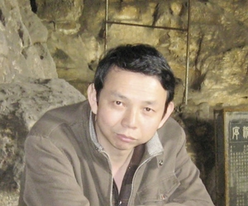Despeckling SRTM and other topographic data with a denoising algorithm
Authors: John A. Stevenson a, Xianfang Sun b, Neil C. Mitchell a
DOI: 10.1016/j.geomorph.2009.07.006
Abstract:
Noise in topographic data obscures features and increases error in geomorphic products calculated from DEMs. DEMs produced by radar remote sensing, such as SRTM, are frequently used for geomorphological studies, they often contain speckle noise which may significantly lower the quality of geomorphometric analyses. We introduce here an algorithm that denoises three-dimensional objects while preserving sharp features. It is free to download and simple to use. In this study the algorithm is applied to topographic data (synthetic landscapes, SRTM, TOPSAR) and the results are compared against using a mean filter, using LiDAR data as ground truth for the natural datasets. The level of denoising is controlled by two parameters: the threshold (T) that controls the sharpness of the features to be preserved, and the number of iterations (n) that controls how much the data are changed. The optimum settings depend on the nature of the topography and of the noise to be removed, but are typically in the range T = 0.87–0.99 and n = 1–10. If the threshold is too high, noise is preserved. A lower threshold setting is used where noise is spatially uncorrelated (e.g. TOPSAR), whereas in some other datasets (e.g. SRTM), where filtering of the data during processing has introduced spatial correlation to the noise, higher thresholds can be used. Compared to those filtered to an equivalent level with a mean filter, data smoothed by the denoising algorithm of Sun et al. [Sun, X., Rosin, P.L., Martin, R.R., Langbein, F.C., 2007. Fast and effective feature-preserving mesh denoising. IEEE Transactions on Visualisation and Computer Graphics 13, 925–938.] are closer to the original data and to the ground truth. Changes to the data are smaller and less correlated to topographic features. Furthermore, the feature-preserving nature of the algorithm allows significant smoothing to be applied to flat areas of topography while limiting the alterations made in mountainous regions, with clear benefits for geomorphometric analysis in areas of mixed topography. The results of denoising on the derived flow accumulation and slope maps, particularly when compared to the results of mean filtering, demonstrate the usefulness of the algorithm in fields such as hydrological modelling and landslide prediction.
